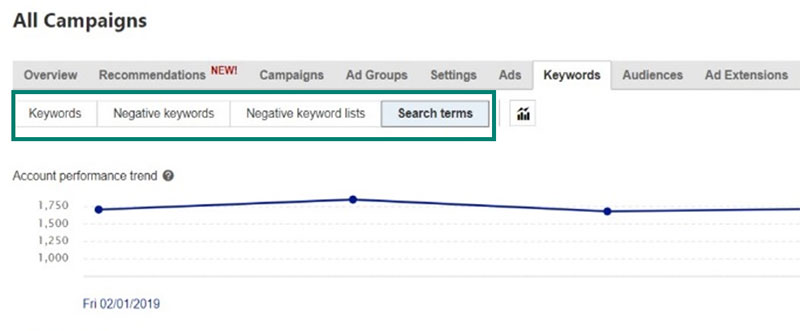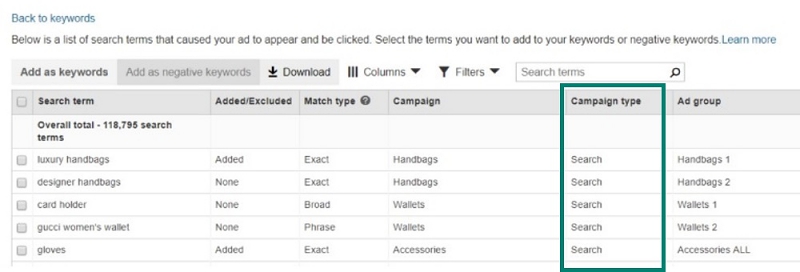Search Buzz Video Recap: Google & Bing Search Ranking Changes, Query Dependent Rankings, CTR & More
This week, we covered both a possible Google search and Bing search algorithm update. Bing said only a few people at Bing really understand how core ranking works there. Google Search Console is sending alerts for big traffic changes. Google’s search algorithm does adjust for YMYL types of queries. Google released a white paper with some interesting search tidbits. Google also said they do adjust algorithms for query types but not industries. Google does not use CTR data for core ranking. Google featured snippets study shows that these don’t change too much. Google Discover Feed filters may come to Google Search Console performance reports. Google said do not tag internal links with UTM parameters. Google said they are trying to speed up from when they crawl to when they render the page. Google says SEOs do not manipulate Google, they manipulate web sites. Google said the UX playbooks are specific to search ads. Google Images is testing images in related searches. Google Maps edits are too easy to manipulate and harm businesses with. Google turned back on the Google Assistant calls in Google My Business. Google Ads now will show mobile page speed scores more often. Google Ads fixed a bug with the ad preview tool. Google has a new way to submit questions for webmaster office hangouts. That was this past week in search at the Search Engine Roundtable.
Make sure to subscribe to our video feed or subscribe directly on iTunes to be notified of these updates and download the video in the background. Here is the YouTube version of the feed:
For the original iTunes version, click here.
Search Topics of Discussion:
Please do subscribe via iTunes or on your favorite RSS reader. Don't forget to comment below with the right answer and good luck!
Extending your effectiveness with audience targeting in Google and Bing
Targeting abilities have noticeably changed for advertisers over the past years, but one form of targeting has become extremely reliable for many advertisers. That is audience targeting. At SMX West, Christi Olson and Brooke Osmundson went over a variety of ways PPC marketers can use audiences in Bing and Google to improve the performance of their campaigns. Let’s go over the main takeaways from their sessions.
Christi Olson: Extending your reach and effectiveness with audience targeting
We’ve been slowly moving away from a base keyword targeting model and toward how the audience is engaging with the keyword. For targeting options, we have a lot to choose from.

So what do we do with all of these targeting options? Don’t think of the complexities. Think of the possibilities. You can reach your customers and customize your ads to talk to the audience and the actions they have taken. So where should we get started?
List membership duration
In addition to a user cookie, list membership duration takes into consideration how many days from the point a user performed an action on your site do you want to target. If you’re thinking of audiences from a “path to purchase” stand point. You’re going to want to set up a variety of audiences to match the buyer’s journey. Look at setting your list durations to match the purchase cycle.

Also, get creative and expand beyond the obvious to build an audience. You are not limited to just basic page visits. One example Christi mentioned involved UTM parameters. Any elements that get passed to your URLs can be created as an audience. Now you know who’s coming in from a variety of campaigns to remarket to them and specify the message.
Unless you are testing, ALWAYS use target and bid
Now Christi did mention this recommendation can still be debated among the PPC circles, but hear her out. She explains why she prefers to use target and bid (while admitting some audiences do not allow target and bid), and it may change your opinion.

If you want to test an audience, that is when you want to consider bid only. If you want to make any changes to your ad copy, landing page and bid optimization, target and bid is the way to go.
Document and diagram your purchase journey
Before you even think about setting up a campaign or choosing your audiences, understand the conversion path users take. Users are going to interact with every site differently. So if you map out the journey (with help from free tools like the Top Conversion Paths report found in Google Analytics), you’ll have a better understanding of the user behavior.
Once you have the purchase journey mapped, you can now focus your efforts on which audiences should be used for each level of the funnel. Figure out how would you target and market to users in the awareness phase versus the interest phase. Then figure out which audience targets will turn interested users into converters.
Audience strategies
Your ad copy and your messaging is the most important part of the audience strategy. It’s what your customer sees and how they interact with your ads. Your audience has no clue how you are marketing to them. So how do you implement a plan to change the ad copy for each audience type while keeping the message engaging? Christi explained how.
Brooke’s presentation focused on three main areas: new demographic targeting options, limitations and things to look out for, and layering audiences to discover the true intent of the user. Let’s dive in.
Google’s detailed demographics
Google’s Detailed Demographics exist in your Audiences tab in Google Ads and are available for Search, Shopping and YouTube ads. These demographic audiences include the following:

How should we use these demographics? One client Brooke had was a local pediatric center who wanted to build awareness. The client wanted to target mostly mothers so Brooke targeted the parental status of only infants and toddlers using the Google Detailed Demographics on campaigns. The client is seeing better CTRs, more brand awareness and more productivity at the pediatric center.
Another example was a realtor trying to generate new leads looking to target first-time homebuyers or current homeowners looking to upgrade. Brooke recommends separating the two audiences in different ad groups or audiences so you could speak to them differently. Here is a hypothetical example of how we can now change our ad copy to match the audience targeting in search. Notice how the ad copy changes because the realtor is speaking to two different audience groups.

Bing Ads and LinkedIn integration
There are some limitations to using the LinkedIn integration. First is we only can use bid modifiers for the LinkedIn audiences. Second, these audiences may not be as effective with lower volume searches.

On a positive note, these audiences can work a lot better than Google’s Detailed Demographics. The LinkedIn audiences are based on someone’s actual user profile so the data has been a lot more accurate. So what are some examples of how we could use this?
For a lawyer client, they wanted to reach only users who wanted to report healthcare fraud. How did Brooke help the client reach people who are searching for “medicare” or “medicare fraud?” They started with a 15 percent bid modifier on industries such as hospital and healthcare, medical practice, and pharmaceuticals since they fit the target audience. This change led to a 44 percent increase in CTR and three times more trackable phone calls.
Limitations and words of caution
If you already embrace audiences, that’s great! However, even if you know the value of audiences, you have to understand new accounts can have their audience capabilities limited.
Layering audiences
How many times have you heard a client say they want to only reach mid-size to enterprise level companies but insist on bidding on expensive, generic keywords? A lot, right? Well, a solution Brooke is testing for this client in the software space is to use detailed demographics feature with target and bid to better hone in on the audience.

What were the results? They saw a decrease in spend on the expensive, generic keywords. They increased impression share on limited campaigns. CTR increased 10 percent, and the competitor searches became more relevant.
Christi and Brooke showed several ways you can use audiences in Google and Bing. Take the time to understand your target user. Also, understand how audiences work in each of the platforms to know both your opportunities and limitations. Once you have this understanding in place, you’ll be able to improve your marketing and better connect with the audience who is right for your business.
Opinions expressed in this article are those of the guest author and not necessarily Search Engine Land. Staff authors are listed here.
About The Author Joe Martinez is the Director of Client Strategy for Clix Marketing. While he is hands-on in all aspects of PPC, his true passions lie in Display, Remarketing, and YouTube. He is a regular contributor to Search Engine Land, Marketing Land, and WordStream. He has also written for PPC Hero, SEMrush, Unbounce, Leadpages, Optmyzr, and AdStage. He has hosted webinars for SEMrush, Unbounce, Quora and Bing Ads. He regularly speaks at conferences such as SMX Advanced, SMX West, SMX East, HeroConf, Confluence Conference, Digital Olympus and more. Finally, he was named a Top 25 Influential PPC Expert by PPC Hero in 2017 and 2018.Bing Ads Improves Search Term Reporting
' ); h3_html = ''+cat_head_params.sponsor.headline+''; cta = ''+cat_head_params.cta_text.text+'→' atext = '
'+cat_head_params.sponsor_text+'
'; scdetails = scheader.getElementsByClassName( 'scdetails' ); sappendHtml( scdetails[0], h3_html ); sappendHtml( scdetails[0], atext ); sappendHtml( scdetails[0], cta ); // logo sappendHtml( scheader, '' ); sc_logo = scheader.getElementsByClassName( 'sc-logo' ); logo_html = ''; sappendHtml( sc_logo[0], logo_html ); sappendHtml( scheader, '
ADVERTISEMENT
' ); if("undefined"!=typeof __gaTracker){ __gaTracker('create', 'UA-1465708-12', 'auto', 'tkTracker'); __gaTracker('tkTracker.set', 'dimension1', window.location.href ); __gaTracker('tkTracker.set', 'dimension2', 'paid-search' ); __gaTracker('tkTracker.set', 'contentGroup1', 'paid-search' ); __gaTracker('tkTracker.send', { 'hitType': 'pageview', 'page': cat_head_params.logo_url, 'title': cat_head_params.sponsor.headline, 'sessionControl': 'start' }); slinks = scheader.getElementsByTagName( "a" ); sadd_event( slinks, 'click', spons_track ); } } // endif cat_head_params.sponsor_logo
Bing Ads has improved search terms reporting with more data and the ability to track more campaigns.
Bing Ads advertisers can now utilize the platform’s search terms management capabilities with shopping campaigns.
Search terms management allows advertisers to specify which keywords to track with respect to how ads perform when triggered by those searches.
Advertisers can also exclude keywords from search terms management, so they only receive insights about the searches they care about.
Bing Ads has expanded that ability to shopping campaigns. Insights from shopping campaigns will appear in the same grid.
Further, the search terms grid is now easier to find. You can now click on the new Search terms option when you’re under All Campaigns in the Keywords tab.
Here’s how it looks:

The search terms grid now also includes a new campaign type column, which helps to distinguish between search and shopping campaigns.

Lastly, Bing Ads has added an Added/Excluded column to view search terms that you’ve already added as keywords or negative keywords.
Bing says there will be more updates in this space throughout the coming year.
Subscribe to SEJ
Get our daily newsletter from SEJ's Founder Loren Baker.
No comments:
Post a Comment